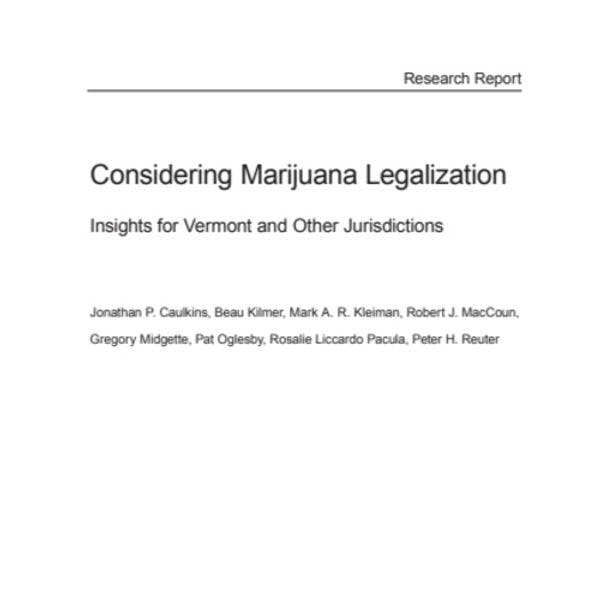La posible legalización del cannabis: opciones para Vermont y otras jurisdicciones
Este informe analiza posibles alternativas a la prohibición del cannabis, poniendo de relieve que estas no deberían entenderse como una elección binaria entre la prohibición y un modelo comercial con fines de lucro. Más información, en inglés, está disponible abajo.
Suscríbase a las Alertas mensuales del IDPC para recibir información sobre cuestiones relacionadas con políticas sobre drogas.
Marijuana legalization is a controversial and multifaceted issue that is now the subject of serious debate. Since 2012, four U.S. states have passed ballot initiatives to remove prohibition and legalize a for-profit commercial marijuana industry. Voters in Washington, D.C., took the more limited step of passing an initiative to legalize home production and personal possession. In December 2013, Uruguay became the first country to experiment with legalization nationwide. In May 2014, Vermont Governor Peter Shumlin signed a bill into law that required the Secretary of Administration to provide a report about the consequences of legalizing marijuana. This report was produced for the Secretary of Administration in response to that legislation.
The report does not make a recommendation about whether Vermont should change its marijuana laws. The goal is to inform, not sway, discussions about the future of marijuana policy in Vermont and other jurisdictions considering alternatives to traditional marijuana prohibition.
The principal message of the report is that marijuana policy should not be viewed as a binary choice between prohibition and the for-profit commercial model we see in Colorado and Washington. Legalization encompasses a wide range of possible regimes, distinguished along at least four dimensions: the kinds of organizations that are allowed to provide the drug, the regulations under which those organizations operate, the nature of the products that can be distributed, and price. These choices could have profound consequences for health and social well-being, as well as job creation and government revenue.
Descargas
Temas
Regiones
Perfiles relacionados
- RAND Corporation
